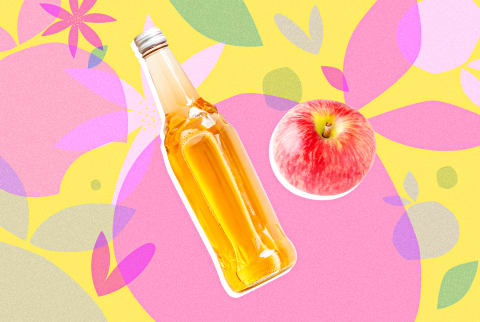However, even though ACV doesn’t necessarily expire, it still ages. Not a bad thing! It just might go through some aesthetic changes that can alter the taste, texture, and appearance of the liquid. Whether you add ACV to your smoothie or create a DIY hair rinse, don’t be alarmed by any haziness or residue in the bottle: Sure, it might look a little different from when you first snagged it off the grocery store shelf, but it works virtually the same. So allow us to emphasize: Just because your ACV might look a little hazy, doesn’t mean it loses its strength—you still want to dilute the solution, especially before applying it to your skin, as the vinegar alone can cause irritation. Even though the efficacy doesn’t change, there’s one caveat here: Melissa Mitri, M.S., RDN, registered dietitian and founder of Melissa Mitri Nutrition LLC, explains that those little shifts in acidic preservatives can make your ACV taste a little more acidic. “There is no risk to consuming it, but it may alter the taste of your recipes,” she says. Ever made an ACV salad dressing that tasted a little too vinegary, even though you mastered the ratio months before? It’s probably because of those slight changes in quality. That doesn’t mean it’s necessarily “bad,” per se, but if you find you don’t like the slight change in taste, feel free to toss the bottle. Rather, both Knudsen and Mitri recommend storing the bottle in a cool, dry, dark area—like, say, in the pantry or kitchen cabinet. To delay the aging process, just remember to screw on the top tightly after each use, as any air that sneaks in can alter the appearance over time.



